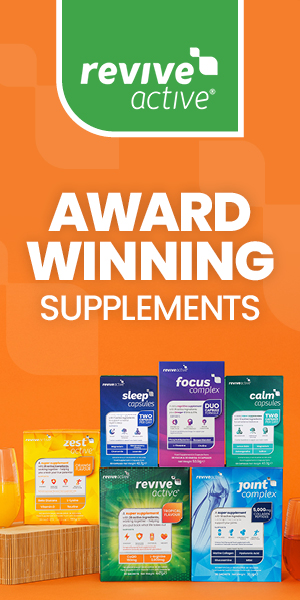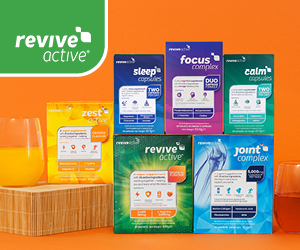Hanna Sillitoe on how to change your skin and combat eczema

If you, or someone in your family, has been diagnosed with eczema, you are not alone. It’s estimated that up to fifteen million people in Britain are living with some form of atopic dermatitis. When it comes to treating this skin condition, £169 million is spent each year on topical medication alone, but steroid creams and thick, greasy emollients are not your only option to tackle eczema.
Skin conditions can begin at any age but, according to the British Skin Foundation, the onset of eczema is most common in childhood. One in five under sixteens is affected by eczema at some point in their young lives.
Even the royals are not immune. The Duchess of Cambridge, Kate Middleton was apparently bullied at school because of her skin, singer Adele has spoken out about her first eczema flare which affected her soon after giving birth, and Catherine Zeta Jones revealed back in 2010, that she’s a long-time sufferer of the disease.
STRUGGLING WITH SKINCARE
Whilst a cure does not exist, over-the-counter creams that can help to reduce inflammation are commonly prescribed. Your doctor might also suggest you avoid certain foods known to make skin worse. In fact, whilst what we eat has been dismissed for years as having no significant impact on acne and psoriasis, GPs seem more open to considering dietary and environmental triggers when it comes to eczema. A 2017 review published in The Lancet also reported that up to 81% of people with eczema were found to have some form of food allergy.
My own battle with severe skin complaints resulted in me struggling with painfully sore, itchy eyelids. Eyelid dermatitis is a common form of eczema that causes the skin on or around the eyes to become dry, tight and irritated. I felt as though my eyelids were peeling off; they were so tender and painful. But no amount of thick, greasy, prescription creams seemed to resolve the issue. At its worst, I remember struggling to open my eyes each morning and then squinting in agony throughout the day.
When we struggle with eczema we’re typically suffering from alterations in the way our skin barrier functions. Studies have also highlighted overly reactive inflammatory and allergy responses. Environmental impact factors, which might include contact with specific chemicals, soaps and other detergents, climate fluctuations, dust, irritating fabrics and / or pet fur, have demonstrated a significant role in triggering or exacerbating eczema.
Finding out what your personal triggers are can sometimes feel like working on a very frustrating jigsaw puzzle. It might take a long while to put all the pieces accurately into place and to determine exactly what it is that most affects your skin.
ECZEMA AND FOOD
Eczema can develop as a result of inflammation in the body, so focusing on anti-inflammatory foods might help to reduce symptoms. Switching to a plant-based diet, rich in skin-boosting vitamins and nutrients is a sensible protocol.
This might sound simplistic, but foods high in inflammation-fighting flavonoids really are key in this anti-inflammatory battle. Examples include colourful fruits and vegetables, such as pears, celery, carrots and raspberries. Rich, leafy greens such as chard, spinach or kale are important too, and foods containing quercetin should be increased. Quercetin is a powerful antioxidant and natural antihistamine. This means it can reduce inflammation as well as levels of histamine in the body. Blueberries, broccoli, apples and cherries are all great sources.
As with many skin conditions, good gut health has also been cited as super important when it comes to managing eczema. Foods rich in the good bacteria that promote a healthy microbiome include coconut kefir, miso soup and tempeh. Other fermented foods and drinks you might like to introduce are sourdough bread, unpasteurised kimchi or sauerkraut and kombucha.
As well as eating more of these healthy foods, it’s equally important to consider which foods might be having a negative impact on your eczema-prone skin. Intolerances or allergies can trigger eczema, and the main culprits are cow’s milk, wheat, soy, nuts, fish, shellfish and eggs.
Milk and dairy products contain high levels of saturated fats and hormones, which alone can raise inflammation in susceptible individuals. In fact, research suggests that an infant may be less likely to develop eczema if their mother completely avoids drinking cow’s milk and takes probiotics during pregnancy.
ALLERGY VERSUS INTOLERANCE
I should clarify, there is a significant difference between food allergies and intolerances. A true food allergy causes an immune system reaction that can affect numerous organs in the body. In some cases, an allergic reaction can be severe or life-threatening. In contrast, food intolerance symptoms are generally less serious but can still trigger digestive issues and eczema flares.
Allergies are much easier to test for; your doctor might recommend an eczema allergy skin prick test. When it comes to intolerances, reactions in response to a particular food can be immediate or delayed. Instant reactions usually develop within an hour of eating the culprit food; this is the immune system responding quickly by creating antibodies. Delayed reactions can happen up to 48 hours after eating a trigger food. This variable timescale can be frustrating when trying to figure out which foods make your skin unhappy.
ELIMINATING TRIGGERS
So, what if you haven’t a clue which ingredients might be making your skin worse? To determine exactly what’s triggering your eczema, I would recommend an elimination cleanse like the 28-day plan in my book, Radiant.
This involves cutting out some of the most common food triggers for at least a month. Citrus fruit, eggs, dairy, gluten, cinnamon, shellfish and tomatoes are a good list with which to begin.
If you suffer from a specific type of eczema called ’dyshidrotic eczema’, it’s also important to avoid foods with a high concentration of nickel. Dyshidrotic eczema typically affects the palms of the hands and soles of the feet, resulting in painful, red blisters, which can become increasingly itchy.
High-nickel foods include beans, canned meats, black tea, lentils, peas, shellfish and soybeans. A significant percentage of people with eczema also struggle with a sensitivity to birch pollen. In this instance, potential triggers might include green apples, kiwis, celery, hazelnuts and peaches.
Determining exactly what’s exacerbating your eczema can seem complex and frustrating at first. There are so many potential allergens and we’re all a little different in what affects us the most. Keeping a food journal to monitor correlations can prove useful and help to stop you stabbing in the dark. From carrying around a list of foods to avoid to staring suspiciously at shower gels, laundry detergents and even the family cat, we can drive ourselves crazy wondering if any of these things are unwittingly making our skin worse!
The good news is studies have shown that complementary and alternative therapies can be incredibly beneficial in managing eczema. Besides consciously considering the foods we eat, switching to natural skincare products, taking soothing oatmeal baths, using a humidifier and wearing soft, non-textured sports clothes, are all simple, inexpensive ways in which we can make coping with the daily struggles of dermatitis that little bit more bearable.

Use code BALANCE10 for your 10% discount at www.HannaSillitoe.com
Skin Healing Expert: Your 5 pillar plan for calm, clear skin by Hanna Sillitoe will be published by Kyle Books, 14th May 2020, £19.99 and is available for pre-order now.











